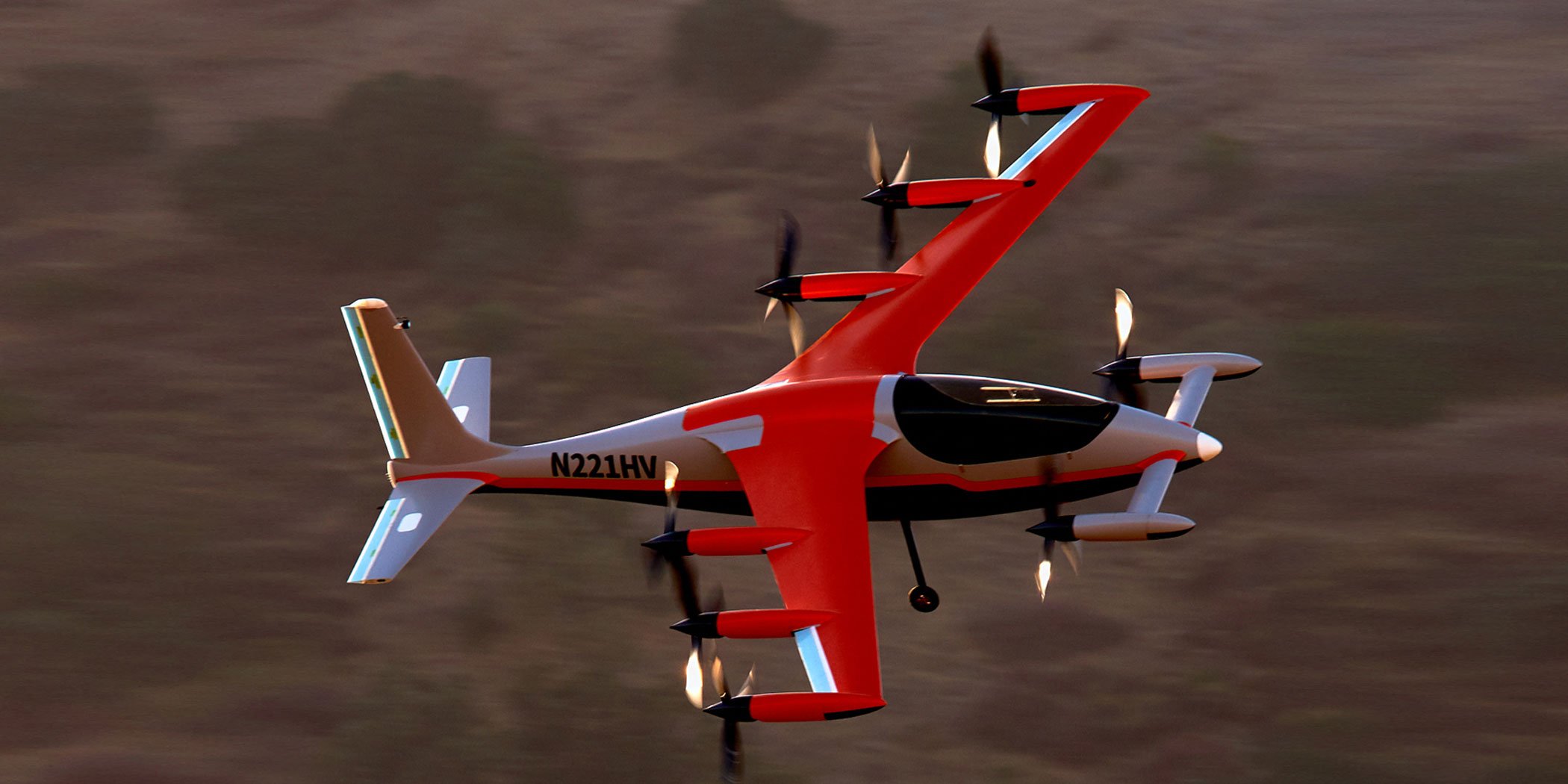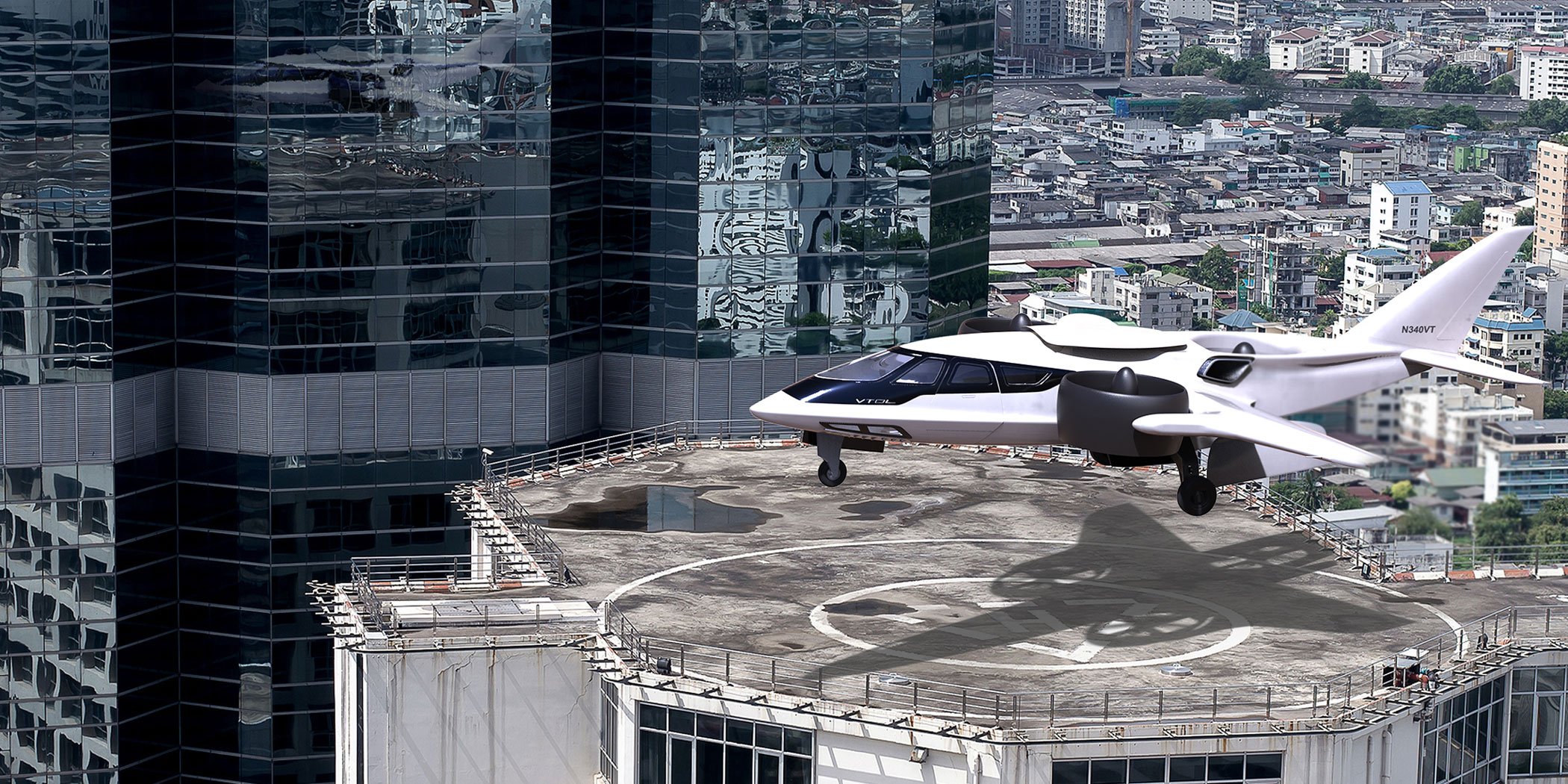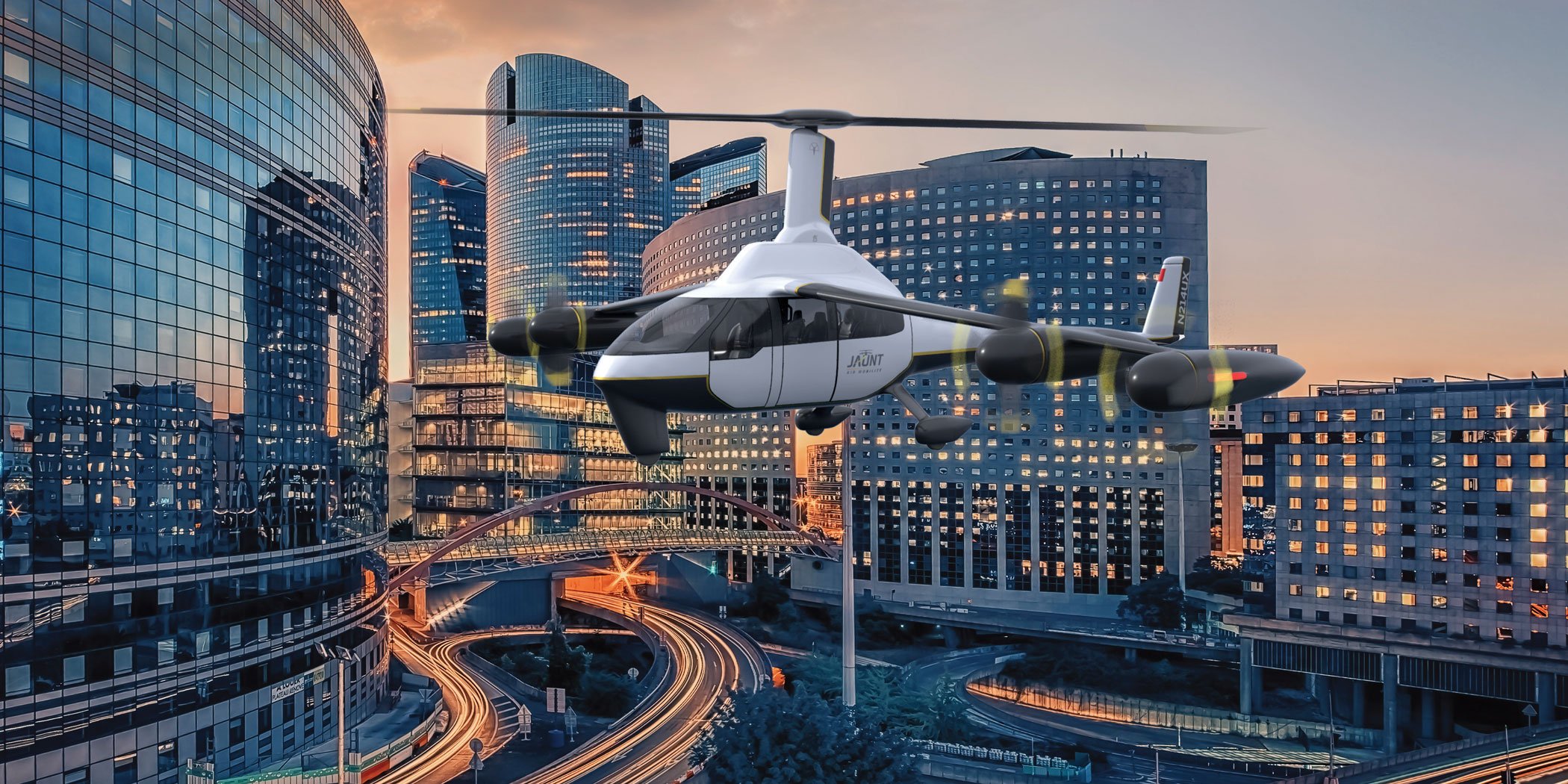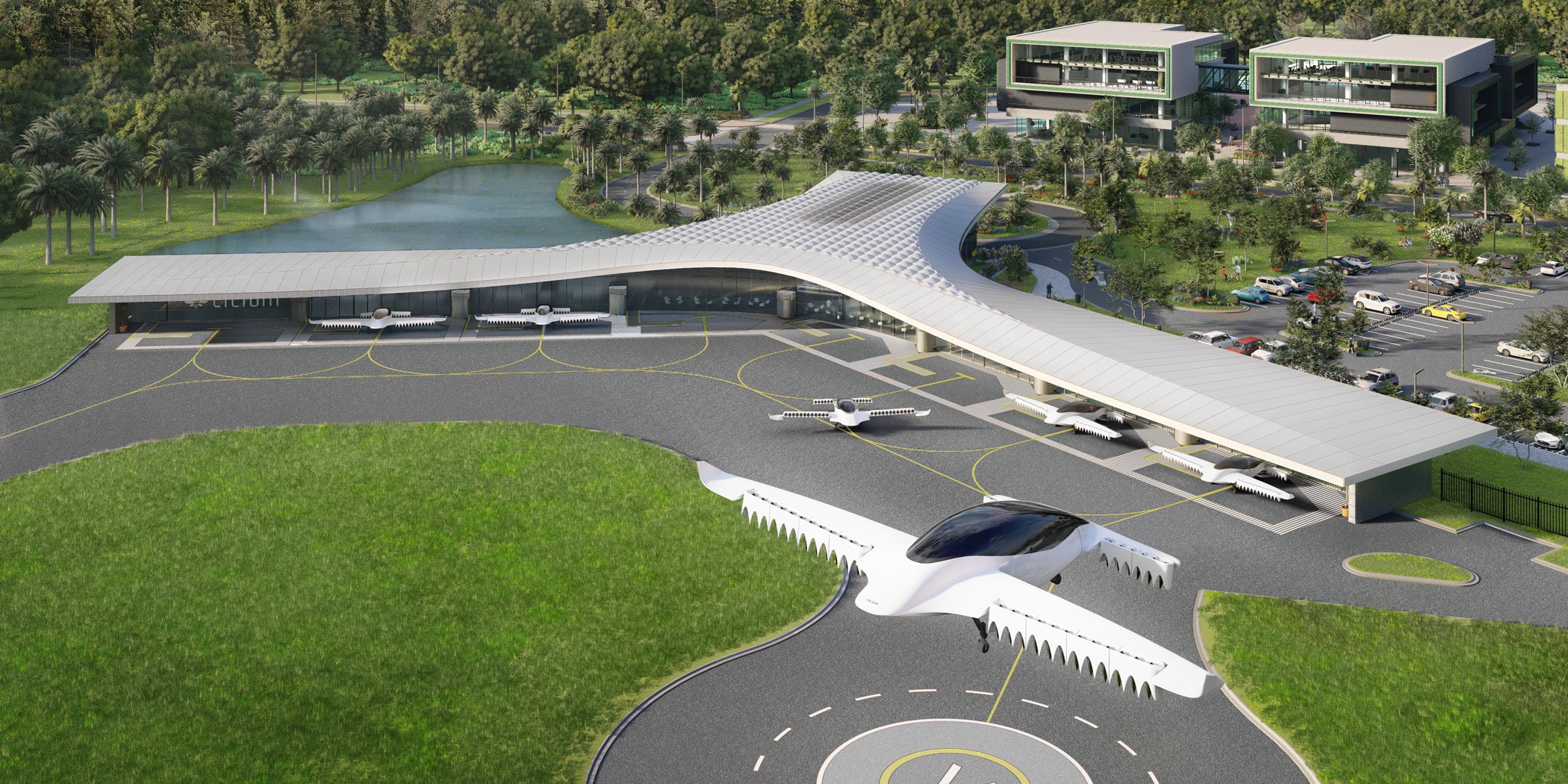Click Here to View This Page on Production Frontend
Click Here to Export Node Content
Click Here to View Printer-Friendly Version (Raw Backend)
Note: front-end display has links to styled print versions.
Content Node ID: 405316
If bullish timelines presented by developers of new electric aircraft to their financial backers turn out to be realistic, residents of cities like Miami and Los Angeles could be among the early adopters for a new mode of air transportation commonly referred to as—and some would say hyped—urban air mobility (UAM) or advanced air mobility (AAM).
What most of the pioneers have in mind are rapidly scaled-up networks of air-taxi flights in and around cities and also to connect communities in so-called sub-regional services. These would be operated with electric, or in some cases hybrid-electric, eVTOL or eSTOL aircraft, carrying between two and nine passengers. Freight operations are also set to be part of an evolution, which in the longer term could also see a transition from piloted to autonomous flights.
Ambitious, well-funded companies such as Joby, Lilium, Volocopter, Archer, EHang, Vertical Aerospace, and Embraer’s Eve division appear to be ahead of a large chasing pack in terms of prospects for completing type certification and service entry. Large cities such as Dallas, Singapore, Paris, Tokyo, Melbourne, Rio de Janeiro, and São Paulo, as well as various communities in the UK, are on the target list for air-taxi markets.
What is somewhat striking about plans announced so far is that many of the prospective eVTOL aircraft manufacturers intend to operate the services themselves, despite having essentially no track record whatsoever in commercial operations. Initially, the prospect of selling new aircraft to existing business aviation service providers, including helicopter operators and scheduled airlines, do not seem to have been part of the core AAM business model, although lately that approach seems to be shifting.
In fact, some of the new AAM breed have made the trip this week to Las Vegas for NBAA-BACE, signaling an intent to partner with the mainstream business aviation sector. Also among this year’s exhibitors are companies already contributing technology and services to the new aircraft, including engine makers Rolls-Royce (Booth 1833) and GE Aviation (Booth 931), aircraft systems and avionics groups Collins Aerospace (Booth 635), Honeywell (Booth 2901), and Kearfott (Booth 2219), as well as training provider CAE (Booth 1501).
However, just five eVTOL aircraft developers are present at the show, touting their varying designs. This is out of more than 200 companies, many of them startups, that are at various stages of developing new aircraft.
While the main feature of the Airbus exhibit (Booth 1902) is its family of airliner-class corporate jets, the European group also has an eVTOL in its plans. It has previously flown and evaluated a single-seat technology demonstrator called the Vahana and this year is supposed to be completing work on a four-seat demonstrator call CityAirbus.
The question for Airbus is what comes next. The company appears to have shifted its future propulsion priorities to plans for hydrogen-powered airliners through its ZeroE program. It may also bring an eVTOL to market, possibly through its Airbus Helicopters division.
Some analysts see Airbus and its rival Boeing as the dark horses in the crowded AAM space, where startups are making all the noise as they scramble for investors’ cash. The established airframers could well be working on plans in stealth mode and are perhaps not in such a frantic scramble to get new products into commercial service first.

Last year, Boeing closed its Boeing NeXt advanced technology incubator unit, which had been the fulcrum for its work on eVTOL aircraft. However, the U.S. group insists it remains committed to the AAM sector and is a 50 percent shareholder in eVTOL developer Wisk, along with a startup called Kitty Hawk (Booth 4100H), which is working on a curiously named eVTOL called Heaviside that is mainly intended for applications such cargo delivery, emergency medical support, and military logistics.
XTI Aircraft (Booth 4100D) has previously exhibited at NBAA shows and clearly views the business aviation sector as part of the target market for its hybrid-electric TriFan 600 VTOL. In June, the Colorado-based company announced a joint venture with Xeriant Aerospace through which it aims to bring the new model to market by the end of 2024. Its new partner has committed to investing an initial $10 million.
According to XTI CEO Robert LaBelle, the TriFan 600 will provide an alternative to existing business aircraft and helicopters, which he said is a market potentially worth around $20 billion. He added that the new aircraft will also offer alternatives to existing airlines, trains, and car trips, adding a wider addressable market that he valued at $930 billion. “The price of a ride in our aircraft will be less than what it would cost someone to drive 500 miles in their own car,” he told reporters at XTI's June press conference.
The VTOL will seat six passengers in standard configuration, rising to nine for “taxi” operations. XTI believes it could prove attractive to airlines looking to establish feeder services into major hub airports or serve "thinner" routes with low passenger numbers.
To date, the company says, it has received a total of 202 "reservations" for the $6.5 million TriFan 600. These include 40 firm orders and 40 options from one undisclosed customer, plus a further 122 commitments backed by cash. XTI also intends to offer the aircraft under leases, as well as providing additional services such as insurance. LaBelle said that both companies and private individuals have placed commitments.
XTI's TriFan 600 has three ducted fans, with two on the wing that tilt during the transition between hover and cruise flight, and a third position within the rear fuselage for vertical propulsion. Power will be generated by GE Aviation’s new Catalyst engine, feeding electric motors and batteries. XTI plans to install photovoltaic panels on the top of the fuselage to provide power while the aircraft is on the ground.
The projected range for the TriFan is 750 miles in VTOL mode, with the figure rising to around 1,380 miles when it takes off and lands conventionally on runways. It will have a cruise speed of around 345 mph and can operate at up to 29,000 feet. The 5,800-pound aircraft will have a full-airframe parachute, allowing it to land safely in an emergency.

In August, XTI said the projected cost per available seat mile for the TriFan 600 will be no more than 80 cents, which it said compares favorably with published amounts for Joby (86 cents), Vertical Aerospace ($1.06), and Archer ($3.30). However, assessing overall costs for the new air-taxi business models is complicated by various unknown indirect operating costs, such as the use of vertiport facilities, including battery recharging.
In any case, XTI’s main point was that with a larger payload, greater range, and a faster cruise speed, it expects the TriFan 600 to offer markedly more cost-effective trip pricing than most four-passenger eVTOLs. For example, it claimed that a flight from Manhattan to New York’s JFK International Airport would cost just $25 per head in its aircraft, compared with $100 in a smaller eVTOL (although Vertical has priced this trip in its new model at no more than $40).

Jaunt Air Mobility (Booth 4100F) is developing a family of VTOL aircraft under existing Part 29 rules for rotorcraft. The company, which earlier this year moved its development and manufacturing base from the U.S. to Canada, expects to start test flights with a full-scale prototype in 2023 and have the aircraft in production in 2026.
The Journey version of the new all-electric VTOL model is intended for passenger services, for which Jaunt already has a prospective launch customer in Italian air taxi startup Walle. Jaunt also is working on plans for the aircraft to be used for emergency medical support, cargo, and military roles. At the same time, it is working with VerdeGo Aero on plans to develop a hybrid-electric version that would have a greater range of at least 100 miles.
Samad Aerospace (Booth 4100A) is making the trip to NBAA in Las Vegas from its headquarters in the UK. It recently completed hover tests with the second subscale prototype of its hybrid-electric eStarling eVTOL as it steps up efforts to secure further investment.
Flight trials conducted during July focused on validating the eStarling's flight control system, including the autopilot. The company, which is headquartered at Cranfield Airport in the UK, is also working on an eSTOL version of the eStarling.
Samad said it now holds letters of intent to purchase 119 eStarlings, with each prospective customer placing a $300,000 deposit, amounting to 5 percent of the $6 million list price. It is also working on smaller-scale cargo-carrying versions of the eStarling, with payloads of between 110 and 220 pounds.

However, noticeable by their absence from the NBAA show are apparent eVTOL aircraft front-runners (in terms of funding and progress with development work), such as Joby, Archer, Vertical Aerospace, Volocopter, and Lilium.
Joby has been working on its plans for a four-passenger eVTOL for the best part of a decade and recently went public through a merger with special purpose acquisition company (SPAC) Reinvent Technology and an initial public offering (IPO) on the New York Stock Exchange. However, it insists that it will have full control over air taxi operations, which it views as an essential revenue stream, and it has shown zero interest in marketing the unnamed aircraft to existing business aviation operators.
Archer, another ambitious California startup, is also heading for Wall Street but does appear more open to collaboration with existing air transport service providers. United Airlines, along with its regional affiliate Mesa, has agreed to buy at least 200 of its four-passenger aircraft in a deal valued at $1 billion (implying a unit price of $5 million).
Earlier this year, Germany-based Lilium announced a partnership with business aviation services group Luxaviation, which is to provide operational support with its planned air taxi network, in particular helping it with the required air operator certificates. Lilium has big plans to establish operations across the most populous parts of Florida, starting with a new vertiport at Lake Nona, near Orlando International Airport, but extending to the densely populated South Florida corridor from West Palm Beach to Miami.
Financial backers for UK-based Vertical Aerospace include American Airlines, leasing group Avolon, Honeywell, Rolls-Royce, and Microsoft as it heads for an IPO through a merger with a SPAC called Broadstone. American and Avolon, along with Virgin Airways, have placed provisional orders for up to 1,000 of Vertical's four-passenger eVTOL, representing the sector’s largest sale to date. The VA-X4 prototype is due to make its first flight before year-end.
The prototype for Volocopter’s two-seat VoloCity eVTOL made an international debut at July’s EAA AirVenture show in Oshkosh, Wisconsin, where visitors were able to sit inside the cabin. It will start operations with a pilot on board but is expected to switch to autonomous mode once a regulatory framework is in place. The German startup is also working on a four-passenger eVTOL called the VoloConnect, which will also offer a range of up to around 60 miles, compared with just 22 miles for its smaller sibling.
EHang appears to be getting close to achieving type certification for its two-seat, autonomous EH216 vehicle in its native China, where it has enjoyed a high degree of cooperation from aviation regulators. The company recently opened a large production facility in Yunfu and is also developing a larger, longer-range aircraft called the VT-30.
Today at 10:30 a.m. in room W233 at the convention center, NBAA will hold a session entitled "Advanced Air Mobility—Blue Skies Ahead." Panelists will be focused on developments such as U.S. federal government policy and legislative initiatives such as the AAM Coordination and Leadership Act (H.R. 1339), which was unanimously approved by the House Committee on Transportation and Infrastructure in late July.
This year’s show in Las Vegas also features a dedicated AAM & Emerging Technologies Zone in Exhibit Hall W4.
The FutureFlight.aero platform produced by the AIN editorial team provides in-depth coverage of new aviation technologies and business models, spanning the advanced air mobility sector and the mainstream air transport industry. Subscribers enjoy access to its extensive database of new aircraft programs as well as other exclusive articles and content. You can sign up for a free trial and also to receive the FutureFlight newsletter each Thursday.